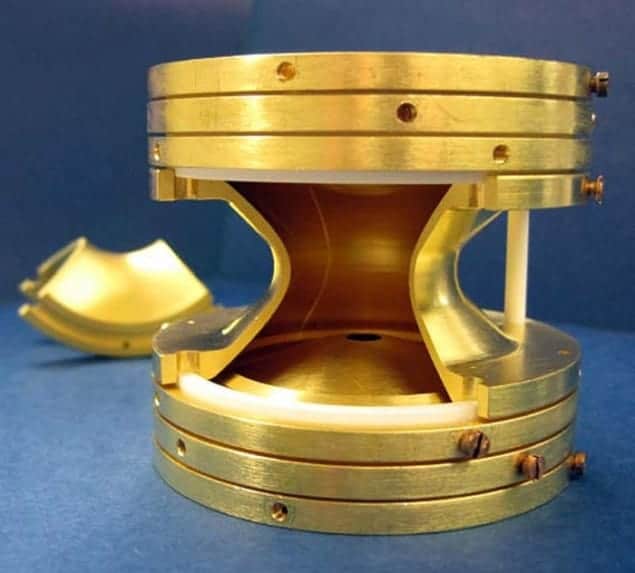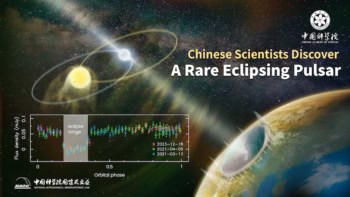
The masses of 33 rare, exotic neutron-heavy nuclides have been measured with high precision by scientists at the Argonne National Laboratory’s CAlifornium Rare Isotope Breeder Upgrade (CARIBU) facility in the US. The findings are crucial to understanding how elements that are heavier than iron might have formed. Following the mass measurements, the researchers also compared simulations of astrophysical nuclear reactions using both the measured masses and theoretical models.
Elements and their stellar forges
Fusion in stars is responsible for the production of elements as heavy as iron. However, the formation of some of the heavier elements remains a mystery. It is thought that half of the elements from iron to uranium are formed in stellar explosions such as supernovae via what is known as the rapid neutron-capture process or r-process – but this is not very well understood.
The r-process involves a nucleus capturing a neutron forming a neutron-rich nuclide that subsequently undergoes beta decay. Nuclides may undergo several transformations involving neutron captures and beta decays to work their way up from iron to uranium, for example. The exact path taken in this process depends strongly on the mass of the nuclei involved, in addition to the temperature and neutron density. A precise measurement of the masses of neutron-rich nuclear species would improve our understanding of the conditions under which heavy elements form in their stellar forges.
Studying exotic nuclei with Penning traps
The new measurements were made by Jonathon Van Schelt at the Argonne Physics Division and colleagues using the Canadian Penning Trap (CPT) mass spectrometer. The CARIBU facility began operations in 2011 and uses californium-252 as its fission source. Its gas catcher is larger and more complex than previous models and is capable of coping with a higher ion current than previously demonstrated. From the assorted nuclei produced in the fission reaction, a magnetic spectrometer in CARIBU selects those nuclei that need to be studied and directs a beam of them towards the CPT mass spectrometer.
Inside the CPT, these nuclei are subjected to electric fields at different frequencies and then fired at a detector. The time-of-flight to the detector helps to determine the resonant frequency for the nuclei being studied. Comparing this resonant frequency with that of a well-known nuclear species used for calibration allows the scientists to compute the mass of the nucleus with high precision, at a level of about 100 parts per billion.
“Penning-trap mass spectrometry is a well-established technique,” says Susanne Kreim from the Max Planck Institute for Nuclear Physics in Heidelberg, Germany, who was not involved in the new research. “The masses presented in this work have mostly already been measured by other such experiments. The technical achievement is demonstrating high-precision measurements using the new CARIBU facility with a high-intensity gas catcher. It was important for the Penning-trap community to show that this method is reliable, as the results show good agreement with previous Penning-trap measurements.”
The abundance of elements
Understanding explosive stellar nucleosynthesis may one day help to tell us why heavy elements such as gold or lead exist and why iron is so much more abundant that gold. In the r-process path, isotopes with long half-lives, such as tin (Sn), may cause a bottleneck in the production of even heavier elements.
“The question I chose to try to answer”, says Van Schelt, “was ‘Under what temperature and density conditions does the r-process move quickly enough to get past the possible tin bottleneck and produce heavier elements?'”
In the absence of measured masses for the nuclides in the r-process path, theorists have needed to construct “mass models”, which contain many approximations. Using the masses for tin and antimony that they had measured, Van Schelt and colleagues then ran simulations at different temperatures and neutron densities to compare their measurements with the theoretical mass models. The simulations using only the mass models showed that it was far easier to get past the Sn bottleneck – in about a second – than it should have been at those temperatures and densities.
Kreim adds that “the CARIBU team has shown that firm conclusions within a classical r-process model can only be drawn if the input parameters, masses of neutron-rich nuclei in this case, have small uncertainties”.
“The study of the r-process has been ongoing for 50 years, and this experiment is only one small step,” Van Schelt points out. “While the CPT has measured the masses of some potentially important nuclides, most of the r-process path remains without such measurements. There also remain additional questions in nuclear physics beyond masses, such as the half-lives and neutron-emission rates of the nuclei involved. CARIBU can help study these as well.”
The research is published in Physical Review Letters.



